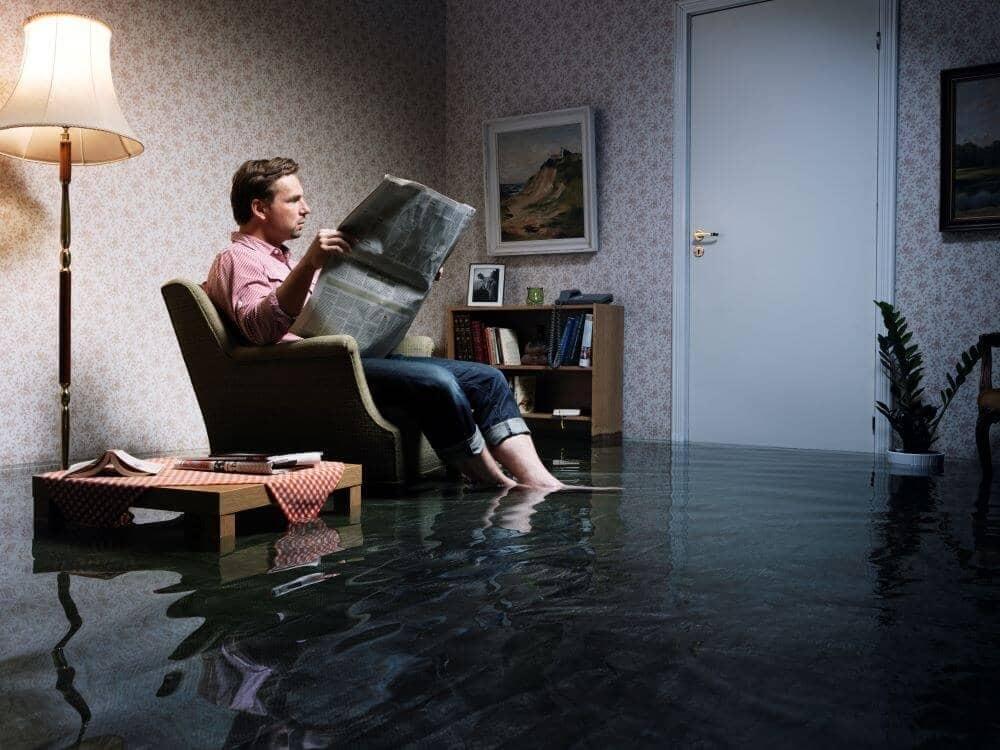Flood insurance guide: Cost, coverage & more

“Be prepared” may be the scout motto, but it could just as easily apply to homeowners. When you buy a house, you need to expect the unexpected: fires, storms, break-ins, termites, title defects — you name it. That’s why getting different kinds of insurance coverage is such an important part of the mortgage process.
There’s one type of insurance that homebuyers often overlook, but depending on where you live, it could be just as critical as homeowners or title insurance: flood insurance. Let’s review how this type of insurance works, what it covers, what it costs and who absolutely needs it.
What is flood insurance?
As the name suggests, flood insurance is a type of insurance that covers homeowners in the event their property or belongings are damaged by flooding. Such incidents are almost never covered by conventional homeowners insurance, so you’ll need to purchase a separate policy if you want to recoup any losses resulting from flooding water.
When we say “flooding water,” what types of incidents are we talking about? Flood insurance usually focuses on overflows resulting from:
- Heavy rain and flash floods
- Cresting rivers
- Hurricanes and other inclement weather
- Seasonal runoff from mountains or rivers
So places with rivers, mountains or hurricane activity could be affected? That describes most of the United States! In fact, according to the Federal Emergency Management Agency (FEMA), 99% of U.S. counties experienced flooding from 1996-2019. Good thing this type of insurance is often offered through the National Flood Insurance Program (NFIP), which is overseen by FEMA. Not all insurance companies will sell flood insurance, and coverage may vary depending on your provider, so don’t be afraid to shop around to get the policy that best suits your needs.
What does flood insurance cover?
Flood insurance policies can be split into two categories: building coverage and contents coverage. Building coverage protects the property and structure of your home while contents coverage is intended to compensate you when your personal belongings are damaged.
More specifically, building coverage plans may include:
- Your home’s foundation
- Exterior walls
- Detached garages
- Furnaces and water heaters
- Electrical systems
- Plumbing
- Appliances like refrigerators, ovens and dishwashers
Contents coverage, on the other hand, can be used to repay damages on:
- Furniture
- Electronics
- Clothing
- Laundry units
- Jewelry
- Artwork
Flooring and carpeting is usually included in building coverage plans, but that’s not always the case. Many insurance companies will sell both of these as separate policies, while others may bundle them together as a single offering. Read the fine print carefully so you know exactly what you’re getting.
Another key difference between these two insurance products is your coverage limit. Building coverage may pay out as much as $250,000 to compensate you for damage to your home. Contents coverage, meanwhile, maxes out at $150,000, so you won’t be able to claim as much with these types of policies.
What isn’t covered by flood insurance?
Flood insurance rarely covers belongings or appliances that are stored in basements, cellars, crawl spaces or other rooms located underground. Notable exceptions include furnaces and water heaters, which are protected by building coverage plans and are often situated beneath the home’s ground level.
More broadly, flood insurance only deals with water damage that directly results from flooding. That may seem obvious, but it’s an important distinction to make. Say your sewer line backs up, filling your basement with brackish water. If that overflow is the result of heavy rain or other obvious flooding events, your policy should compensate you for any damages. On the other hand, if the underlying problem turns out to be that your sewer line is clogged or has been damaged by tree roots, then you might be out of luck.

How much does flood insurance cost?
Flood insurance has a reputation for being pretty expensive, but it mostly depends on how likely your property is to experience significant flooding. If your home is located in a designated flood plain, for instance, then you can expect to shell out more money compared with a homeowner living on top of a hill.
Other factors that influence your insurance premiums include:
- The structural integrity of your home
- The age of your home
- The type and amount of coverage you want
- The size of your deductible
- The elevation of your home’s lowest level, especially compared with your area’s base flood elevation
According to FEMA, policyholders paid $700, on average, for their annual flood insurance premium in 2019. Before you scoff at that expense, keep in mind that the average flood claim payout from that same year was roughly $52,000. Depending on your circumstances and level of risk, flood insurance may be worth the cost to gain some peace of mind.
Who needs flood insurance?
Flood insurance isn’t always just a nice-to-have policy — in some cases, it may be mandatory. The federal government often requires homeowners in high-risk flood areas to purchase flood insurance. In particular, anyone with a government-insured or government-backed mortgage, such as an FHA loan, will need to take out a policy.
Even if the government doesn’t require you to buy flood insurance, your mortgage lender might. In fact, lenders are obligated to give every borrower a Special Flood Hazard Notice that details the purchased property’s specific flood zone. This notice will also tell you if your new community participates in the NFIP flood insurance program and whether flood insurance will be mandatory to close your loan.
But let’s say both the government and your lender are OK letting you get by without this insurance. Should you roll the dice and skip it? That really comes down to how risk-tolerant you are. No one else except for you can say if the added expense of flood insurance is worth the potential payout. Regardless of which way you decide to go, be sure to weigh your options carefully. Compare different insurance companies and individual plans so you can make an informed decision and find the coverage you need at a price you can afford.
In conclusion
Flood insurance provides coverage in the event that your home or your belongings are damaged by overflowing water. These policies are separate products from homeowners insurance, which rarely includes flooding as a covered event. In some cases, the government may require you to buy a policy if you live in a high-risk area. Your lender may even stipulate it as part of the mortgage process. All the same, given how many parts of the country experience significant flooding, it may be a good idea to have this coverage regardless if it’s mandatory or not.
Not all insurance companies offer these plans, but you should still be pretty selective about your choice of policy. Compare rates, covered events, payouts, premiums, deductibles and other policy terms to whittle down your options to the best available. When disaster strikes, you’ll want to know you made the right decision with your flood insurance provider.




